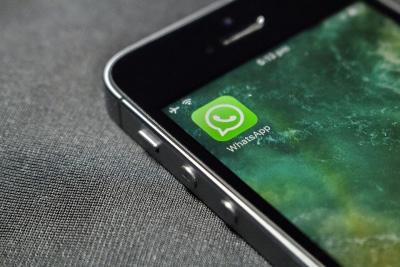
2 minute read
China to send zebrafish to space to study bone loss in astronauts
Manned Space Engineering Space Application System, was quoted as saying by Global Times.
OpenAI’s CEO Sam Altman launches crypto project
Advertisement
‘Worldcoin’
Beijing, July 24 (IANS) China is all set to send zebrafish to its Tiangong space station to understand how astronauts face bone loss in microgravity, the media reported.
The small fish species will be sent into orbit on Tiangong as part of research into the interaction between fish and microorganisms in a small closed ecosystem, Zhang Wei, assistant to the commander-in-chief of the China
Previously, many other organisms include space rice "Xiaowei," arabidopsis thaliana "Xiaonan," and multiple groups of nematodes have already visited the Chinese space station.
Zebrafish share high homology with human genes, up to 87 per cent.
They were also sent to the Soviet Union's Salyut 5 space station in 1976 aboard the Soyuz 21 mission. Soviet cosmonauts conducting experiments with the fish found that the Zebrafish appeared to modify some of their behaviours in response to living in microgravity.
Tiangong has prepared a space home for them - the life ecological science experiment system located in the Wentian lab module. It is a closed "aquarium" with about one litre of water that can breed four to five zebrafish, as well as some algae and microorganisms. An automatic feeding device has been developed. An intelligent system that monitors fish growth and automatically feeds them was developed and entered space with the launch of the Wentian lab module in 2022, the report said. Further information regarding the timeline of the experiment and its aquatic apparatus was not disclosed.
WhatsApp widely rolling out interface improvements aligned with Material Design 3

alerts and redesigned toggles. Redesigned chats tab and the floating action button are also rolling out to represent an incoming message bubble.
San Francisco, July 24 (IANS)
OpenAI CEO Sam Altman on Monday launched its audacious eyeball-scanning cryptocurrency startup 'Worldcoin' to help build a reliable solution for distinguishing humans from AI online, enable global democratic processes and drastically increase economic opportunity.
simply for being human. According to the company, where the rules are less clear, such as in the US, steps will be taken so more people can benefit from both.
Users can now download World App, the first protocol-compatible wallet, and reserve their share. After visiting an Orb, a biometric verification device, they will receive a World ID. This lets them prove they are a real and unique person online while remaining completely private.
As the global distribution of Orbs is ramping up, users can find the closest one and book time to be verified with World App and at Worldcoin's official website.
San Francisco, July 24 (IANS)
Meta-owned messaging platform
WhatsApp is widely rolling out enhancements to the interface of the app, aligned with Material Design 3, on Android beta. The rounded menus are now available to more users, along with the bottom navigation bar and the new floating action button, reports WABetaInfo. Moreover, further enhancements to the interface are available with the release of the new rounded
"Thanks to this update, many more users will be able to experiment with the latest improvements to the interface that align with the Material Design 3 guidelines," the report said.
Earlier this month, it was reported that the messaging platform was working on an animated avatar feature for Android beta, to help improve the users' interactions.
The animated avatars will likely bring more life and personality to stickers, allowing for a more expressive communication experience.
Last month, it was reported that the messaging platform was rolling out a feature on Android beta, which allows users to send high-quality videos.
While this feature preserves video dimensions, minor compression will still be applied to the video, thus sending videos in their original quality is not possible. The default option will always be 'Standard quality' for all videos, therefore, users have to select the high-quality option every time they want to send a video with better quality.Moreover, a tag will be added to the message bubble when sending a video with the high-quality option to inform the recipient that the video is sent using this feature.








